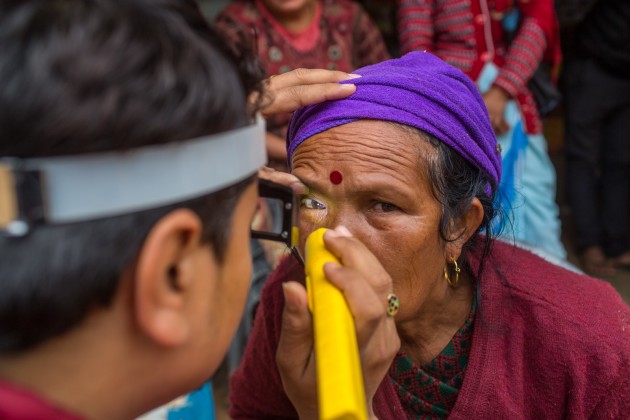Nepal becomes first country in South East Asia to eliminate trachoma
Kathmandu, May 24/ The World Health Organisation has validated Nepal for having eliminated trachoma as a public health problem – a milestone, as the country becomes the first in WHO’s South-East Asia Region to defeat the world’s leading infectious cause of blindness.
“Nepal’s achievement is commendable and results from strong political commitment, intense community engagement and impressive leadership demonstrated by civil society,” said Dr Khetrapal Singh, regional director, WHO South-East Asia.

Trachoma was the second leading cause of preventable blindness in Nepal in the 1980s. “This remarkable achievement demonstrates what political commitment and sustained partner support can do,” said Dr Tedros Adhanom Ghebreyesus, WHO director general.
“It is a big step towards health for everyone and comes at a time when Nepal accelerates its fight against other neglected tropical diseases.”
A letter acknowledging validation was presented yesterday to Minister of State for Health and Population Padma Kumari Aryal by Dr Khetrapal Singh and the WHO Director General Dr Ghebreyesus in Geneva, Switzerland, where the World Health Assembly is taking place, according to the official website of the WHO.
In 2002, the Government of Nepal stepped up efforts to eliminate the disease with the establishment of a national trachoma programme. From 2002 to 2005, following the implementation of sustained control activities, the prevalence of active (inflammatory) trachoma fell by 40 per cent.
“The fight against trachoma gained momentum due to strong government commitment and leadership backed by community engagement and the support of health workers and volunteers,” said Aryal. “Other factors that boosted control and elimination activities included funding from and excellent coordination among key partners and donors,” she added.
The Government of Nepal, through the Ministry of Water Supply and Sanitation, provided incentives to local communities and districts to build and maintain latrines – measures that were crucial to improving sanitation and reducing disease-carrying flies. To increase awareness, the national trachoma programme collaborated with the Ministry of Education to include a module on trachoma in the school curriculum.
“We managed to accelerate awareness about the disease and sanitation through education campaigns involving brochures, posters, flipcharts, radio announcements, and programmes in schools and village health centres,” said Sailesh Mishra, executive director, Nepal Netra Jyoti Sangh. “These were run by teachers and local health volunteers,” he added.
Approximately 30, 000 operations were provided to manage trichiasis, and almost 15 million doses of azithromycin were distributed. Between 2002 and 2014, eye hospitals and dozens of eye centres and clinics with trained staff were established across Nepal.
Azithromycin is donated by the pharmaceutical company Pfizer through the International Trachoma Initiative and was delivered in Nepal by NNJS with support from the United States Agency for International Development-funded ENVISION project, implemented by RTI International. A series of surveys conducted progressively from 2005 to 2015 showed that active trachoma in children had been brought below the elimination prevalence threshold. Low prevalence was maintained after mass antibiotic treatment was discontinued.
